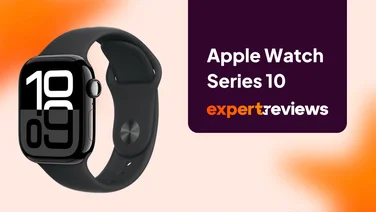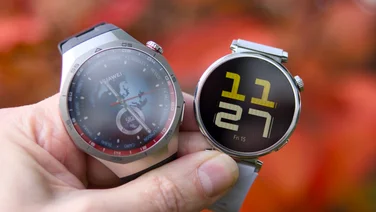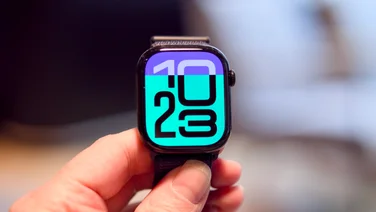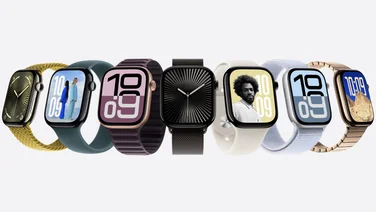To help us provide you with free impartial advice, we may earn a commission if you buy through links on our site. Learn more

The Fitbit Charge is essentially the same as the old Fitbit Force, with one important difference – it doesn’t give you a painful skin rash from wearing it. The dermatological problems with the Fitbit Force were unfortunate, since at the time it was undoubtedly the best activity tracker on the market.
But surely that means that the Charge is equally as good? Well, yes, but the competition has caught up in the time it has taken Fitbit to replace the Force with the Charge. So, while the Fitbit Charge is still a good fitness tracker, it’s not the most feature packed device out there.
See all the best fitness trackers and smartwatches here
History lessons aside, the Charge is a wrist-based fitness tracker that will measure every step you take throughout the day, and also track your sleeping patterns at night. Unlike the budget Fitbit Flex, the Charge also has an altimeter built into it, which will measure every flight of stairs you climb throughout the day, a feature that I’d really like to see in every fitness tracker.

The Charge is slightly larger than the Flex, but its extra girth does allow for a built-in screen. The OLED display is pretty small since it doesn’t run along the band like the Garmin Vivosmart HR or Garmin Vivofit. Instead the display spans the width of the band, making it quite small but arguably easier to read.
I’m always glad to see a built in display on a fitness tracker, as it means you don’t need to take your phone out of your pocket every time you want to check your progress. There’s a single button on the side of the Charge which will cycle through your data showing time of day, steps taken, distance travelled, calories burned, flights of stairs climbed and active minutes.
On the downside, that display needs to be activated by pressing the button, which means you can’t simply glance at your wrist to check the time like you can with the Garmin Vivosmart HR. That said, the Charge will display caller ID information when your phone rings, so you can decide whether or not to bother getting your phone out of your pocket to take the call.
Despite being larger than the Flex, the Charge is still unobtrusive compared to some of the other trackers available. It’s also quite comfortable to wear, with a similar lugged clasp to the Flex. That clasp isn’t the most secure solution though, so make sure the Charge doesn’t come loose when you’re taking off your coat or jacket. By contrast, the Fitbit Charge HR uses a more secure buckle, which would have been nice to see on the standard Charge too.

As with the Fitbit Flex, and most other wrist-based trackers, you can set silent alarms. This means that the Charge will vibrate to alert you, which is handy if you share a bed and need to be up far earlier than your partner. Strangely, though, Fitbit doesn’t let you use that vibration alert to tell you when you’ve been inactive throughout the day. Devices like the Jawbone UP24, Jawbone UP3, and Garmin Vivosmart HR will all alert you with a vibration when you’ve been sitting around doing nothing for too long, which is sometimes all it takes to get you up and about.
As well as tracking all your steps, the Charge also tracks what Fitbit calls ‘active minutes’, which are essentially periods where the Charge recognises that you’re pushing on a bit, rather than taking a leisurely stroll. The Charge then takes that data and estimates other metrics like calories burned and distance travelled.
It will also log your sleep patterns, to see how much you move about in the night, though we’re not convinced it’s as easy to act on that date. We suppose you could try and cut down on caffeine later in the day to improve your sleep, though you don’t need a fitness tracker to tell you that.
As with the Fitbit Flex, Fitbit Surge and Fitbit Charge HR, you get a charging cable in the box that connects via a proprietary plug, along with a USB wireless dongle. The latter is a really nice touch, allowing you to sync the Charge wirelessly whenever you’re near your computer as well as via your phone.
Talking of your phone, the Fitbit app is well designed, simple and effective. All the data you need is within easy reach when you open the app, and you can dig deeper if you wish. There’s a built-in food database for tracking your calorie intake, complete with barcode scanner, but it’s somewhat limited for the UK and we’d definitely recommend linking your MyFitnessPal account to the Fitbit app instead.

As well as pulling in your food and calorie data from MyFitnessPal, you can also link other apps you might be using, like Strava or Runkeeper. While most fitness tracker apps offer a similar open ecosystem today, Nike’s insistence on a closed system for its Nike+ FuelBand tracker – arguably the device that started the trend – could be the reason for that device’s demise.
The Fitbit web portal is also beautifully built, with your dashboard made up of dynamic tiles that you can switch on/off, and move around so that the data that’s most important to you is where you want it. Your dashboard will also show you how you’re measuring up to your Fitbit friends, making every day a competition – it’s surprising how compelling it is to beat the friends on your list.
The Fitbit Charge has an RRP of £100, but a look around the web showed that you can easily pick one up for around £65, which makes it a tempting option. However, if you like the Charge and everything it does, we can’t help thinking that it’s worth stumping up the extra cash for the Charge HR (from around £93) and tracking your heart rate everyday too.
Conclusion
The Fitbit Charge is a decent fitness tracker, just like the Fitbit Force on which it’s based. Unfortunately the competition has caught up and in some instances surpassed the core feature set that we first saw in 2013 on the Force. The Charge is still worth a look at the right price, but you’d be better off going for the Fitbit Charge HR with it’s increased functionality and more secure strap design.





